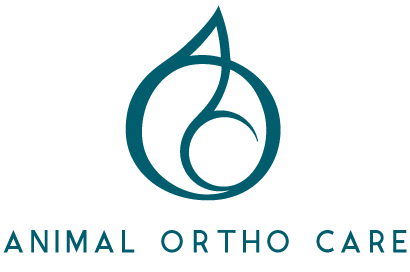How Does My Dog's Knee Brace Stay On?

Custom Dog Knee Braces appear to magically suspend, when your dog is running around without the slipping or falling. Is this a magic trick? Surprisingly, no. It’s simply a snug fit and your dog's natural anatomy that helps keep their brace properly positioned for maximum support with minimal discomfort.
In order to best understand how your dog’s brace stays on - most commonly known as suspension - we need to consider the shape of their leg. A dog’s leg is similar to a human one but positioned differently. Humans are bipeds, meaning we walk on two legs, while dogs are quadrupeds, meaning they walk on all four legs. Despite the distinction in how they use them to walk, human and dog legs are actually quite similar. Both can be broken down into six parts:
1. Pelvis (hip)
2. Femur (thigh)
3. Patella (knee cap)
4. The tibia and fibula (calf)
5. Tarsal bones (ankle)
6. Phalanges (toes)

Human knee braces stay up by gripping the upside-down teardrop shape of the calf. They often also use something adhesive - usually some sort of silicone - to stick to the skin of the leg itself. These two methods together create reliable suspension for human knee braces.
Dog calves aren’t shaped the same as their human counterparts, so they don’t work for suspension. Dogs also have fur, so relying on something sticky is a not always the best solution. Fundamentally, dog knee braces need completely different forces and make use of anatomical structures for suspension.

Luckily, dogs have a prominent ankle area called the hock. Unlike humans, a dog's ankle is raised up off of the ground while walking. The hock is a pressure tolerant area, so it can support the extra weight of a brace without discomfort. That means a padded strap wrapped above and around the hock can serve as the main suspension point for your dog’s brace.
The hock alone, however, isn’t enough to keep the brace in place. Adding a tibia strap around the dog's leg, just below the knee, helps hold the brace’s position on the knee. Another strap holds the brace securely on the thigh. Finally, custom dog knee braces also use the shape of the brace itself to help stay on your dog's leg. A snug yet comfortable fit is essential for staying on securely and providing optimal support.

Our custom dog knee braces apply all of the steps above. If you ever experience difficulty with keeping your dog's custom knee brace on, we will work closely with you in order to provide the best fit possible for your pup. Email us at care@aocpet.com with some photos of the fit and our skilled fabrication technicians will look at the overall fit of the brace on your dog and will decide what needs to be done in order to achieve the best fit. Some common modifications that may be needed, and what problems we address, include:
-
Reducing the height of the thigh section: If the thigh section is too high, it digs into your dog’s groin and pushes the brace out of position.
-
Bringing in the brace’s sides: If the casting of your dog’s leg was too loose you may have gaps between that leg and the fabricated brace. This can also happen if your dog’s leg was swollen when the cast was taken. Bringing in the sides ensures a snug fit.
-
Tightening straps in the right order: It’s important that you tighten the straps in a certain order when putting the brace on your dog. Start with the bottom hock strap and work upwards to the top thigh strap, tightening each one so that they are snug yet comfortable. Tightening in the wrong order often pushes the leg backward, causing gaps.
-
Bringing the sides of the hock section in: Some dogs just have less prominent hocks! That means the brace needs to be adjusted to get the suspension and support it needs.




